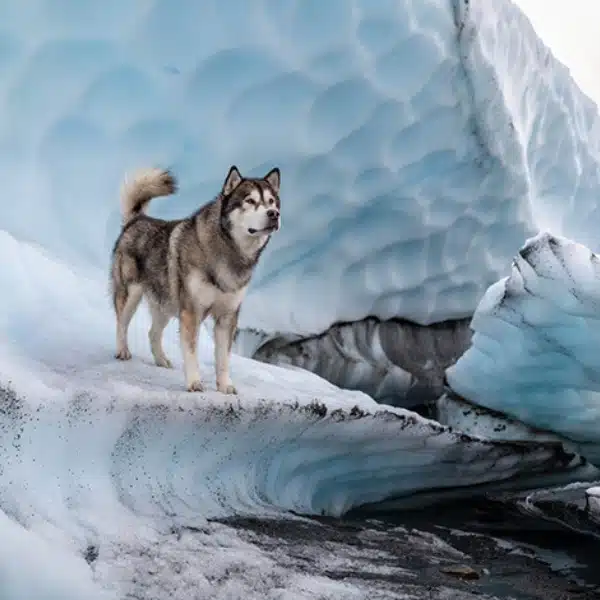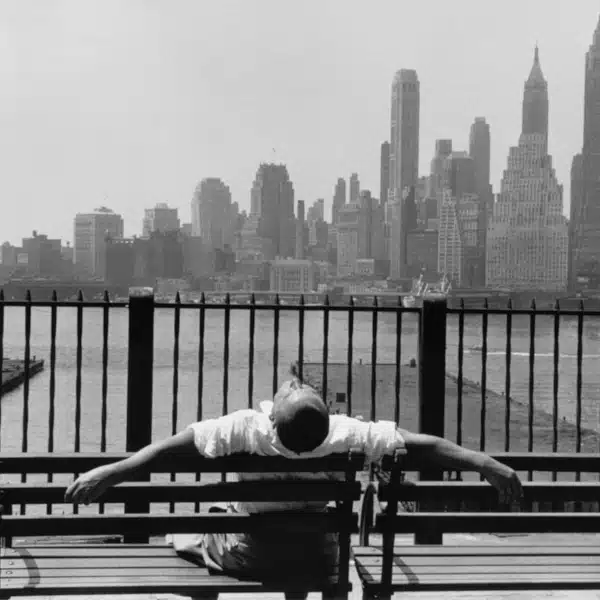Barefoot nomads roaming the desert; tribe members laughing together, their faces covered in paint; youths on horseback galloping across Tibetan plains–these are the subjects of Still Points in a Turning World, a fascinating series by photographer Terri Gold that documents the few indigenous tribal cultures left in the world.
The New York-based photographer travels to faraway locations like Niger, Ethiopia, China, and India to capture stunning images of tribes and their traditional rituals. Rendered in achromatic tones with striking pops of blue, the hauntingly beautiful infrared portraits preserve the memory of clans and cultures that, although shrinking with each passing year, are still rich with unique histories and customs dating back centuries.
“Indigenous cultures that still follow their traditional way of life are rapidly disappearing,” Gold writes in her artist statement. “Globalization and the push of technology into once isolated areas [are] threatening to forever alter the old ways. At risk is a vast archive of knowledge and expertise. What is the value of ancient practices? What will be discarded and what will be treasured? The timeless past will soon meet the imminent future. What will become of us if the myriad voices of indigenous people fall silent?”
We had the chance to interview the photographer, who recently returned from a trip to Kenya and is currently in the middle of mounting an exhibition. Scroll down to read more about Gold's creative vision, inspiration, and experiences.


How did you first become interested in photography and traveling?
My earliest memories are of spinning a globe. I was always drawn to the last mysterious corners of the Earth. I wanted to visit people who have not forgotten the old ways, who feel their past in the wind. The names of far off lands called to me; Samarkand, Lhasa, Timbuktu. I began my travels in books; I read all the old traveler's tales. I dreamed of traveling with a caravan across the Himalayas. As soon as I was old enough, I stepped into my dreams with three cameras around my neck and my life's journey began.



What inspired you to photograph indigenous cultures around the world?
My ongoing body of work Still Points in a Turning World explores our universal cross-cultural truths: the importance of family, community, ritual and the amazing diversity of its expression.
After years of traveling, I have experienced the pride indigenous people have for their environment and their culture. I realize that, although I was initially drawn by our vast differences, I continue to be fascinated by the ways in which we are alike.
I am not showcasing otherness, but rather providing a window on our common humanity. Though we may not see our own customs and traditions in these images, it is my hope that we recognize the universal desire to connect with our history and acknowledge the wonder and dignity of human expression.



What subjects are you drawn to in your photography?
I have always had a passion for visually capturing the rituals that define our lives, and to create images that explore our human connections as they are formed. I am inspired by the different ways people find meaning in their lives, and how an individual explores their existence through their traditions. I love festivals and celebrations of every kind, where people are living in the moment, the unguarded moment.



Can you tell us about your use of infrared and how you came to incorporate it as a signature part of your work?
From the beginning of my career, I searched for a film that could portray the world how I experienced it, with all its mysteries. I began making images using infrared film and creating split-toned images in the darkroom. I now use a digital camera converted to infrared and the digital darkroom.
Working with infrared light adds an element of iridescence and mystery, which suits the surreal sense of time when traveling to places where the customs of different millennia coexist side by side.



You must have seen so many incredible things in your years of traveling. Can you tell us about a memorable experience you had while working on your latest series Nomads in Niger?
Travel to Niger has been restricted for the past six years. I was traveling with three other women from the West and we were the only foreign guests I encountered throughout our journey. We camped in 110F heat, in small tents sleeping under the deep black skies and the Milky Way. We were among 1,000 nomads, their camels, sheep, goats, burros, and longhorn cattle, listening to the cacophony of the herds at night. The nomads arrived by camel with all their possessions for the weeklong party. Being a nomadic celebration, there was no fixed date or location. We had to patiently search and were thrilled to finally find their annual gathering.
We had 18 armed guards that the government insisted we travel with. All had AK-47s, and there was a 50mm machine gun on each truck (one ahead of us and one at the rear). We were shadowed quietly by them throughout the trip. I had never traveled like this before. The nomads welcomed us graciously, but right after we left al-Qaeda spilled over from Libya. Had our timing been different, we would have had to cancel the trip. I feel privileged to have witnessed the festivals that so few people get to see.



What do you hope to achieve through your photography?
I want to create imagery that reminds us, and generations to come, how beautiful and diverse the human world is. My work is interpretive in nature, a combination of the artistic and documentary style of photography. On every trip, I have been welcomed into private homes and lives, shared in celebrations, and allowed to photograph intimate family rituals.
I have learned that if we share our stories and appreciate the mysteries of every realm, we may yet gain a deeper understanding of that which lies both behind and ahead of us.

Terri Gold: Website | Facebook | Blog
My Modern Met granted permission to use photos by Terri Gold.























































































